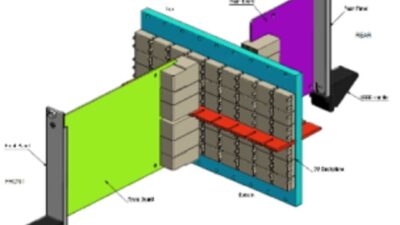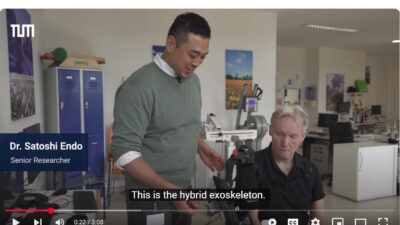This material addresses numerous reader inquiries asking how to calculate tuning parameters. Users should understand this material is not a substitute for formal training on process control loop analysis and tuning, but rather as an introduction or refresher. Control Engineering provides this information as a service and makes no guarantees of its usefulness for a particular application (See also, summary, in August ‘News.’ ).
R ecent articles in Control Engineering have addressed methods to improve control loop performance (see Feb. 99, p. 77 , May 99, p. 91 and p. 99 ). In each article, information related to collecting and analyzing process variable information has been explained, but little has been provided on how to use this information to calculate controller-tuning values. This has not been an oversight-calculating controller tuning values requires knowing considerable information about the algorithm used by the controller.
There are essentially three types of algorithms in use: ideal, parallel and series. Ideal algorithms are generally found only in textbooks. Parallel control algorithms have three independent (parallel) calculations for Proportional (Gain), Integral, and Derivative. An advantage of parallel calculation construction is changes in the values to one do not affect the other two. A disadvantage is they are difficult to manually tune. Series control algorithms are constructed so the output of one calculation is part of the input to the next calculation, thus ‘upstream’ calculation changes affect ‘downstream’ calculations. This is frequently referred to as controller tuning interaction. Series control algorithms are the most common used in analog and digital controllers.
Proportional term definition Proportional Band % = 100/Propotional Gain
Proportional Band (Proportional Gain)
Gain
1%
100.0
10%
10.0
50%
2.0
100%
1.0
500%
0.2
1,000%
0.1
Source: Control Engineering with data from Techmation Inc.
Comparison of units used for controller integral settings
Seconds per repeat
Repeats per second
Minutes per repeat
Repeats per minute
1
1.00
0.0167
60.0
5
0.20
0.0833
12.0
10
0.10
0.1667
6.0
60
0.0166
1.0
1.0
120
0.0083
2.0
0.5
240
0.00417
4.0
0.25
480
0.00208
8.0
0.125
1,000
0.0010
16.6667
0.06
Source: Control Engineering with data from Techmation Inc.
PID controllers operate on an error feedback where the output is normally characterized when there is a difference between the PV and SP. However, it is not always advantageous for a controller to operate on an error signal. It is common practice to allow a controller to respond differently to SP changes verses load (PV) changes. It is important to understand which algorithm variables will be affected when the SP is changed versus when the PV is changed. Continuous processes normally have PV load changes, while batch processes tend to have more SP changes. Depending on how the controller is being used, how the algorithm reacts to SP and PV changes, and how tuning constants are determined/calculated, it is possible to have a controller perform better one way than another.
Technical libraries contain volumes on various ways to calculate controller-tuning values. One of the most efficient and consistent ways to collect and analyze process data is to use software from companies like ControlSoft (Cleveland, O.), Techmation (Scottsdale, Ariz.) or ExperTune (Hubertus, Wis.). Also, most control system manufacturers offer a variety of control loop analysis and tuning software. When software isn’t available, some useful guidelines can be applied.
Ultimate Sensitivity Method The goal is to achieve a marginally stable controller response(see marginally stable response chart)
Closed Loop (Loop in Automatic)
Test 1
Choose any GAIN setting. Place INTEGRAL at maximum time (smallest value) and place DERIVATIVE at minimum value or turn it completely off.
Make a 10% change in SETPOINT (SP).
Record the PROCESS VARIABLE (PV) and CONTROLLER OUTPUT (CO) responses. (If process becomes unstable, place the loop in MANUAL and do what is needed to maintain control.)
If recorded response produces a stable (lagging) response, proceed to Test 2.
If recorded response produces an unstable (leading) response, proceed to Test 3.
Test 2
Double the GAIN setting (Leave INTEGRAL and DERIVATIVE the same as Test 1).
Make a 10% change in SP.
Record the PV and CO responses. (If process becomes unstable, place the loop in MANUAL and do what is needed to maintain control.)
If recorded response produces a stable (lagging) response, repeat Test 2.
If recorded response produces an unstable (leading) response, proceed to Test 3.
Test 3
Half the GAIN setting (Leave INTEGRAL and DERIVATIVE the same as Test 1 and 2).
Make a 10% change in SP.
Record the PV and CO responses. (If process becomes unstable, place the loop in MANUAL and do what is needed to maintain control.)
If recorded response produces a stable (lagging) response, proceed to Test 2.
If recorded response produces an unstable (leading) response, repeat Test 3.
Repeat testing until a marginally stable response has been recorded.
Source: Control Engineering
Once a marginally stable response is obtained, all the information necessary to calculate usable controller tuning constants is available. The following table provides guidelines useful in determining usable tuning constants for P (proportional), PI (proportional and integral), and PID (proportional, integral, and derivative) controllers.
Determining `usable’ controller settings
Controller assumptions:
Controller algorithm is series.
Proportional (P) is entered as gain (not proportional band).
Integral (I) is in minutes per repeat (not repeats per minute).
Derivative (D) is in minutes.
Proportional (P) only controller
Multiply the ultimate gain setting in the controller by 0.56.The result will provide automatic control but may create a PV to SP offset. To eliminate/reduce the offset, introduce INTEGRAL (I).
Proportional and Integral (PI) controller
1. Multiply the ultimate gain setting in the controller by 0.45.2. Multiply the ultimate period by 0.83.
Proportional, Integral, and Derivative (PID) controller
1. Multiply the ultimate gain setting in the controller by 0.67.2. Multiply the ultimate period by 0.50.3. Multiply the ‘ultimate period by 0.125.
Repeats
A calculation of (Proportional GAIN * OFFSET).
Repeats per minute
How many times will the controller perform the (Proportional GAIN * OFFSET) calculation in one minute?
Minutes per repeat
How much time, in minutes, does it take the controller to perform 1 (Proportional GAIN * OFFSET) calculation?
Derivative (D) Cautions
Derivative action is applied only one time when the PV moves away from SP.Derivative works on rate-of-change. If the PV rate-of-change is caused by ‘noise,’ derivative may cause over-correction. Never use derivative on a process with a noiseband greater than 0.25%. Control loops likely to have significant noise are pressure and flow. Level can also be noisy when stirred/agitated or splashing can/is occurring.
Source: Control Engineering
Reaction curve (open loop) method Many people become very nervous when a controller is placed in automatic with tuning constants that produce cyclic, on the brink of out-of-control response. For these nervous types, a method known as open loop (loop in manual) reaction curve testing may be less stressful (see CE, May 99, p. 99 ).
The philosophy of open loop testing is to begin with a steady-state process, make a step change to the final control element and record the results of the PV. Information produced by the open-loop test is the loop deadtime and the loop time constant. Users must be accurate in determining times for T2, the point where the PV first begins to move, and T3, the point where the PV attains 63.2% of the total PV change. Following an open-loop test the recorded information should closely resemble the Open Loop Test Results diagram below.
A side benefit to conducting and recording the open-loop test is the establishment of a loop signature for future reference in determining if the process has changed. For example, if the loop signature is for a temperature controller on a heat exchanger, a significant change in the loop signature could indicate the heat exchanger is losing efficiency.
Using the results of the open-loop test to calculate controller-tuning constants requires dividing the percentage change in PV by the percentage change in CO to obtain an open-loop gain. The open-loop gain (OLG) and control loops inherent gain (IG) are used in the formula (OLG * P(gain) = IG). With terms rearranged, the formula becomes IG divided by OLG = P(gain).
Consider the following guidelines when calculating controller-tuning constants:
If a control loop has an inherent gain of one, and the open-loop gain is four;
Then the proportional gain required for the controller is one divided by four or 0.25. (Place 0.25 in P constant of the controller.)
RULE #1: If loop dead time is less than or equal to
Then open-loop gain times process gain equals one.
COROLLARY #1 : If loop dead time is approximately
Then open-loop gain times process gain equals 0.5
COROLLARY #2: If loop dead time is greater than or equal to the loop time constant;
Then open-loop gain times process gain equals 0.25.
NOTE: Controller scan times should be at least eight times faster than the loop time constant.
RULE #2: Integral time (I T ) should be equal to loop time constant (LTC).
I T = LTC when LTC is in repeats per minute.
RULE#3: Derivative time should be less than or equal to
Source: Control Engineering with data from Techmation Inc.
Integrating processes Integrating processes are those for which only one CO setting in manual mode produces a stable (balanced) PV. Level, batch temperature, batch pressure, and pH tanks are examples of integrating processes. Expanding on the level example, with the control loop in manual, only one CO setting allows the amount of liquid entering a vessel to exactly equal the amount of liquid leaving the vessel. Any other CO setting will cause the level PV to integrate upward or downward.
Gathering data for integrating processes is best accomplished using an open loop test.
Find the balance point where vessel/process input is equal to vessel/process output.
Make a 10% to 20% change in the CO setting.
After the PV has integrated 3% to 5% change the CO output back the balance point value.
Repeat step two in the opposite direction.
Repeat step three.
The reason to conduct the test in both directions is that some loops (i.e., heating and cooling) will likely produce a different slope for each direction. When this is the case, the less aggressive slope should be used to determine controller-tuning constants to prevent loop instability. When unexpected graphs are produced, likely causes are stiction or backlash in the control valve. Trying to tune such loops is nearly impossible because the controller is attempting to overcome mechanical defects that likely will become worse with time.
Integrating processes usually produce the best overall results with medium response tuning constants that allow some overshoot. Use caution when applying derivative to integrating processes. If ‘excessive’ hysteresis is found in a control valve, use only slow PI tuning constants.
Controller tuning constants for integrating processes should utilize high gain and slow integral (small repeats per minute).
Cascade control loops Cascade control loops are effective when trying to maintain tight control over slow moving variables. For example, boiler level can be tightly maintained using a level controller cascaded to a flow controller.
To have an effective cascade control strategy the dynamics of the secondary loop must be at least five times faster than the primary loop. (Dynamics are defined as loop dead time multiplied by loop time constant.)
To tune a cascade control loop:
Place secondary loop in automatic (disconnect the secondary loop from the primary loop).
Conduct test and tune secondary loop.
Place secondary loop in Remote SP (connect secondary and primary loop).
Conduct test and tune primary loop.
Note: Ensure secondary loop does not have setpoint limits or unnecessary assigned alarms.
When embarking on a journey to tune all loops in a process, work from the raw material end to the final product end beginning with flows, then pressures, followed by levels, then temperatures, and finally what remains.
Contrary to popular belief, control loop tuning is a science. But it begins with analysis of each component in the loop to ensure each piece of equipment in the loop is capable of performing at its best (see CE, Feb. 99, p. 77 ). Once the equipment is ready, methods have been developed and repeatedly proven to work, but it takes knowledge and patience. The pay off to having every control loop performing at its best is a minimum 5% quality and production improvement that could go as high as 25%.
Contact Information:
ControlSoft, Inc.14077 Cedar Road, Ste. 200Cleveland, OH 44118216/397-3900
Techmation Inc.8070 E. Morgan Trail #150Scottsdale, AZ 85258602/968-9946
ExperTune Inc.4734 Sonseeahray Dr.Hubertus, WI 53003262/628-0088
Comments? E-mail [email protected]



